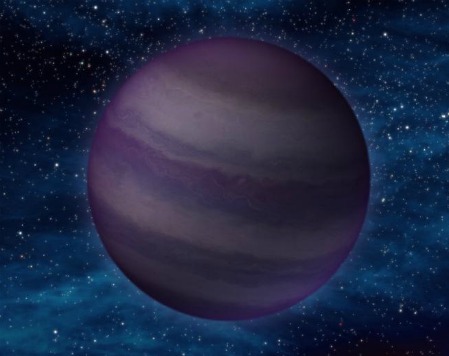Well, nearby is relative, this object is nine light-years away, that’s over 50 trillion miles for us earthlings! But cool is correct no matter what part of the universe you live in. This brown dwarf is a balmy 25 C, about 80 F.
“The brown dwarfs we were turning up before this discovery were more like the temperature of your oven,” said Davy Kirkpatrick, a WISE science team member at the Infrared Processing and Analysis Center at the California Institute of Technology in Pasadena, Calif. “With the discovery of Y dwarfs, we’ve moved out of the kitchen and into the cooler parts of the house.”
Brown dwarfs are objects that didn’t make it to starhood, they lack enough mass to sustain hydrogen fusion in their center (The closest thing to a brown dwarf in our solar system is Jupiter). Astronomers classify brown dwarfs by letter, starting with class L for the hottest and Y for the coolest. Dim and distant, they’re very hard to see. They could be more common than stars, meaning our corner of the Milky Way galaxy could be swimming in them for all we know and our nearest interstellar neighbor could be a brown dwarf instead of the Centauri system 4.3 light-years away..
This is a gas ball, at some point under those dense clouds the temperature exceeds 25 C by a comfortable margin (It’s probably hot enough to melt iron within just a few hundred miles below the cloud tops). It’s a good bet some of these objects have moons — or would they be classified as planets? Either way, those smaller objects could experience tidal flexing like the Galileon moons of Jupiter. Io, the inner most moon of Jupiter, is the most volcanic body known in the solar system, Europa and Ganymede are both covered with fresh ice suggesting a surface that is regularly sculpted anew by cyro-geology, possibly driven by geothermal vents far below in a vast underground ocean.
That could be a very alien environment, but its possible specialized bacteria or their ET equivalents could cluster around the hypothetical heat sources, it’s even possible more sophisticated communities could develop around those simple organisms similar to the enigmatic ecosystems around earth’s black smokers and cold seeps. But protected by thick ice, circling a cool brown dwarf light years away, it will be a long, long time before we ever find that out, if we ever do. Europa on the other hand …


You said:
it’s probably hot enough to melt iron within just a few hundred below the cloud tops.
………
ummm. A few hundred??? feet? yards? meters? fathoms? furlongs? kilometers? miles? leagues? AU? Light-years? Parsecs?
Just curious.
And for further curiosity, how far below the atmosphere’s edge are the cloud-tops? Just trying to put this in context:
We’re measuring heat flux of the planet. It’s “giving off” radiation at an average temp of just under 300 kelvin. How far down from the outer-radius of the object do you need to be for a heat flux of 300k to become a steady-temp of 1560 or so (although wouldn’t pressure alter the melting point?)?
The amount of mass in between would have to be dependent on the elemental and molecular structures involved – some will be more opaque to heat, and thus do a better job insulating, than others.
Thus you’ve got a fairly complicated question and I don’t actually have the knowledge to figure out a reliable answer, even if I have an idea what the problems are.
I’d be guessing that you would have been saying “miles” or “kilometers”, but without knowing how far down the clouds themselves are, I don’t know what this means. And it’s still a guess.
So, out of curiosity, what were you trying to say and more interestingly…what were you thinking about when you said it? Which aspects of this problem were included in your estimate?
Thanks for an interesting post and a provocative deletion.